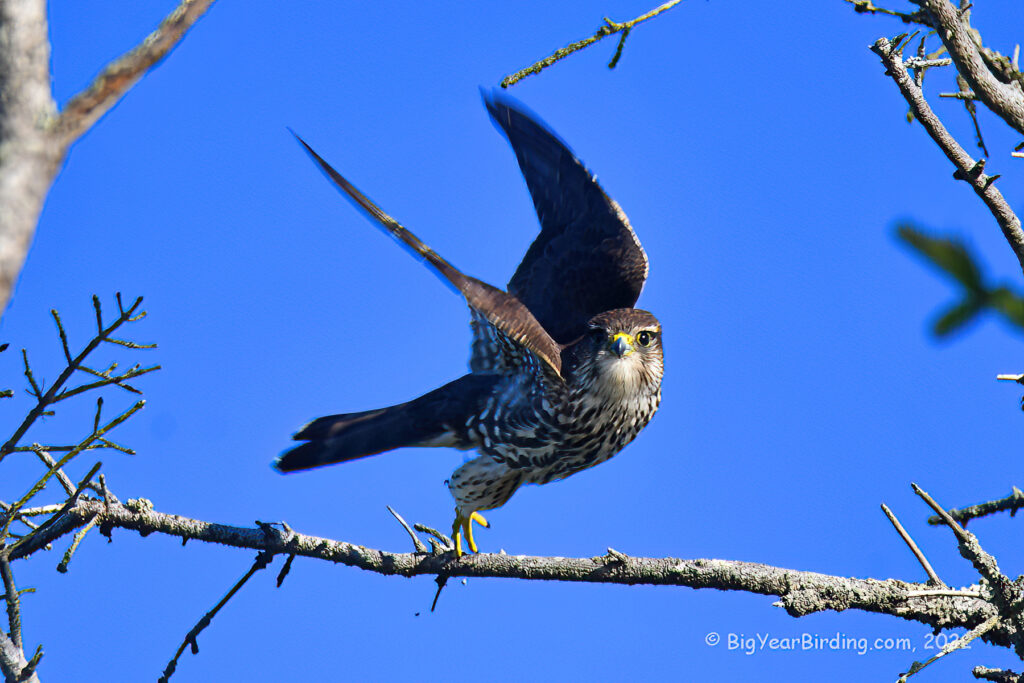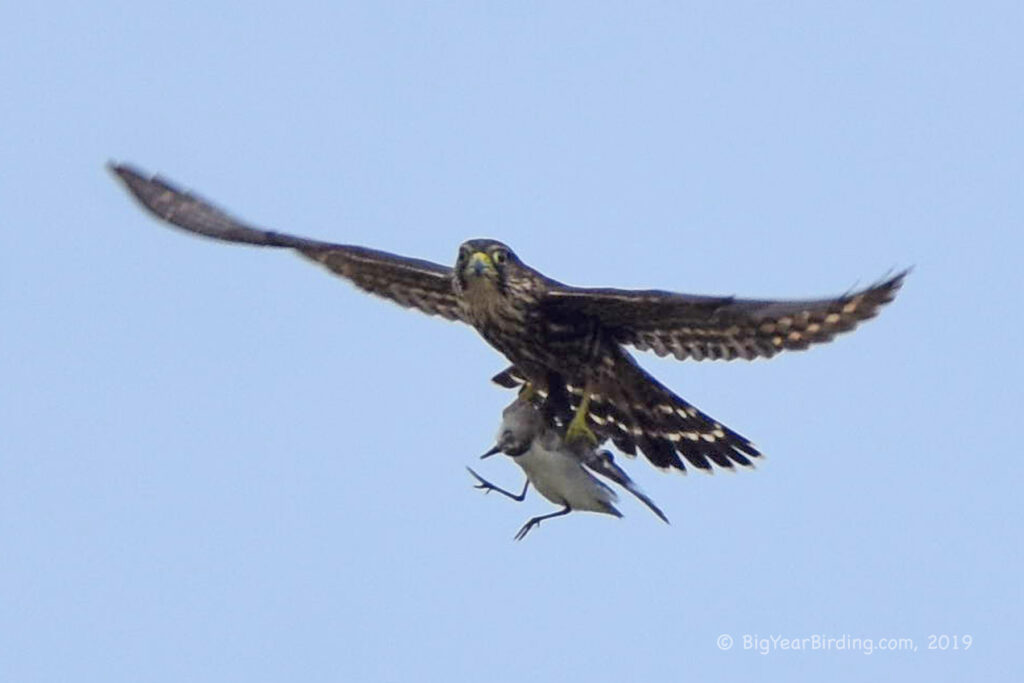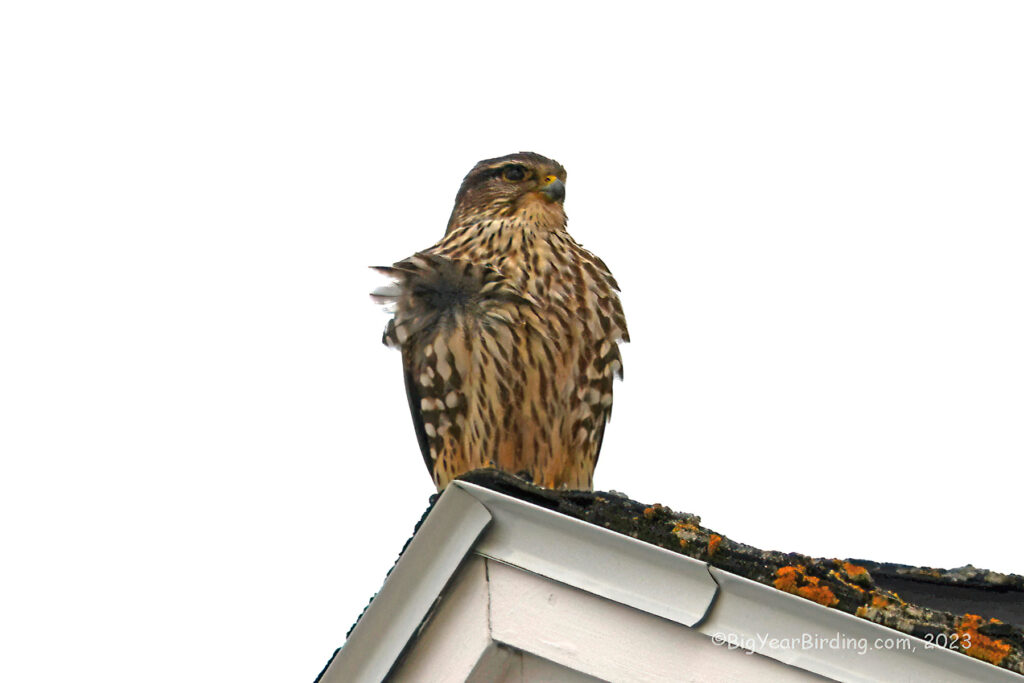
The Merlin is a small, agile falcon that is found across much of the Northern Hemisphere. Measuring just 9-12 inches in length and weighing between 4.4-8.8 ounces, the Merlin is one of the smallest falcon species in North America. The male Merlin is significantly smaller than the female, with a wingspan of just 20-26 inches compared to the female’s 24-30 inches. These diminutive raptors are often difficult to spot, as they are fast and elusive, darting through the air with incredible speed and precision.

Despite their small size, Merlins are fierce predators, known for their ability to take down birds much larger than themselves. They are easily recognized by their long, pointed wings and compact, streamlined bodies. Male Merlins have a distinctive blue-grey back and wings, while females are brownish-grey with streaks on their underparts. Both sexes have a dark mustache mark on their faces, which gives them a somewhat fierce appearance.
Merlins are migratory birds, with populations in North America typically breeding in Canada and Alaska and wintering in the southern United States and Mexico. During migration, they may travel up to 6,000 miles, making their way from their breeding grounds to their wintering habitats. Along the way, they may stop at key sites to rest and refuel, such as coastal wetlands or open grasslands.

Despite their speed and agility, Merlins face a number of threats in the wild. Habitat loss and degradation, as well as pesticide use, have led to declines in some populations. In addition, Merlins are sometimes persecuted by humans who view them as a threat to game birds or domestic fowl. Despite these challenges, however, Merlins remain an important part of many ecosystems, helping to keep bird populations in check and contributing to the overall health of their habitats.

